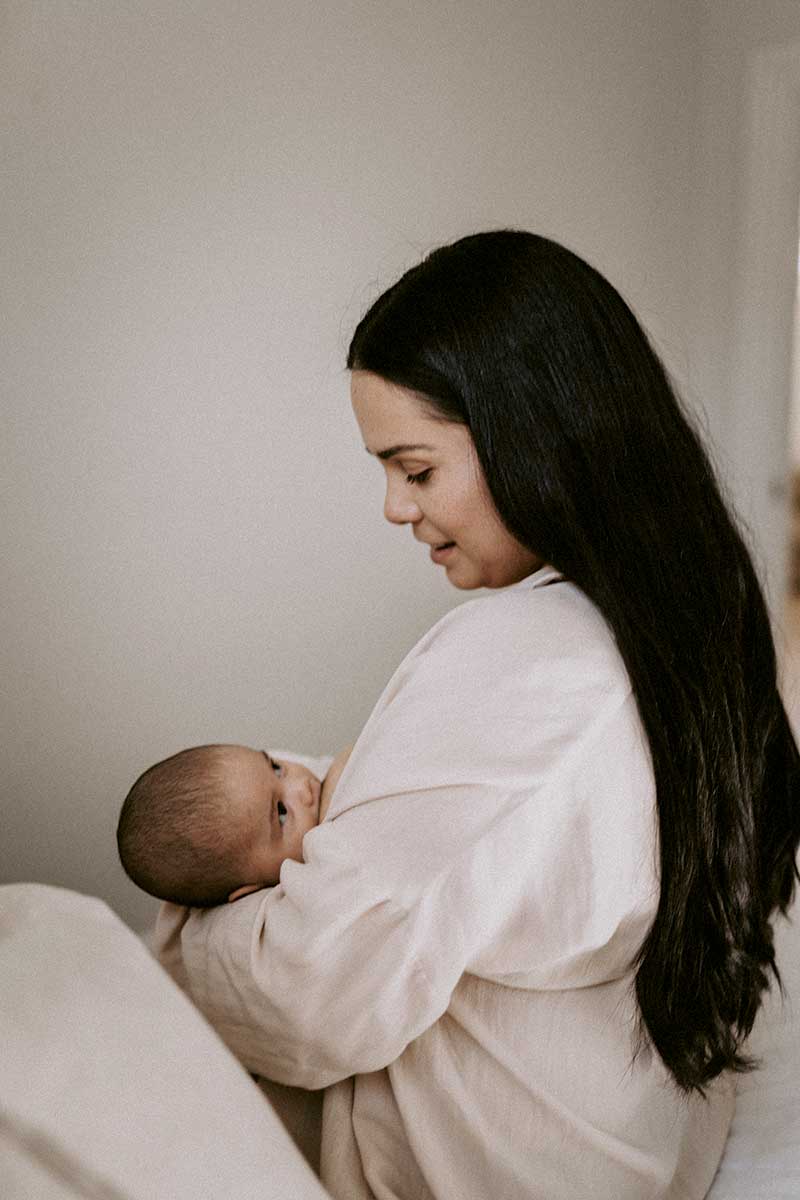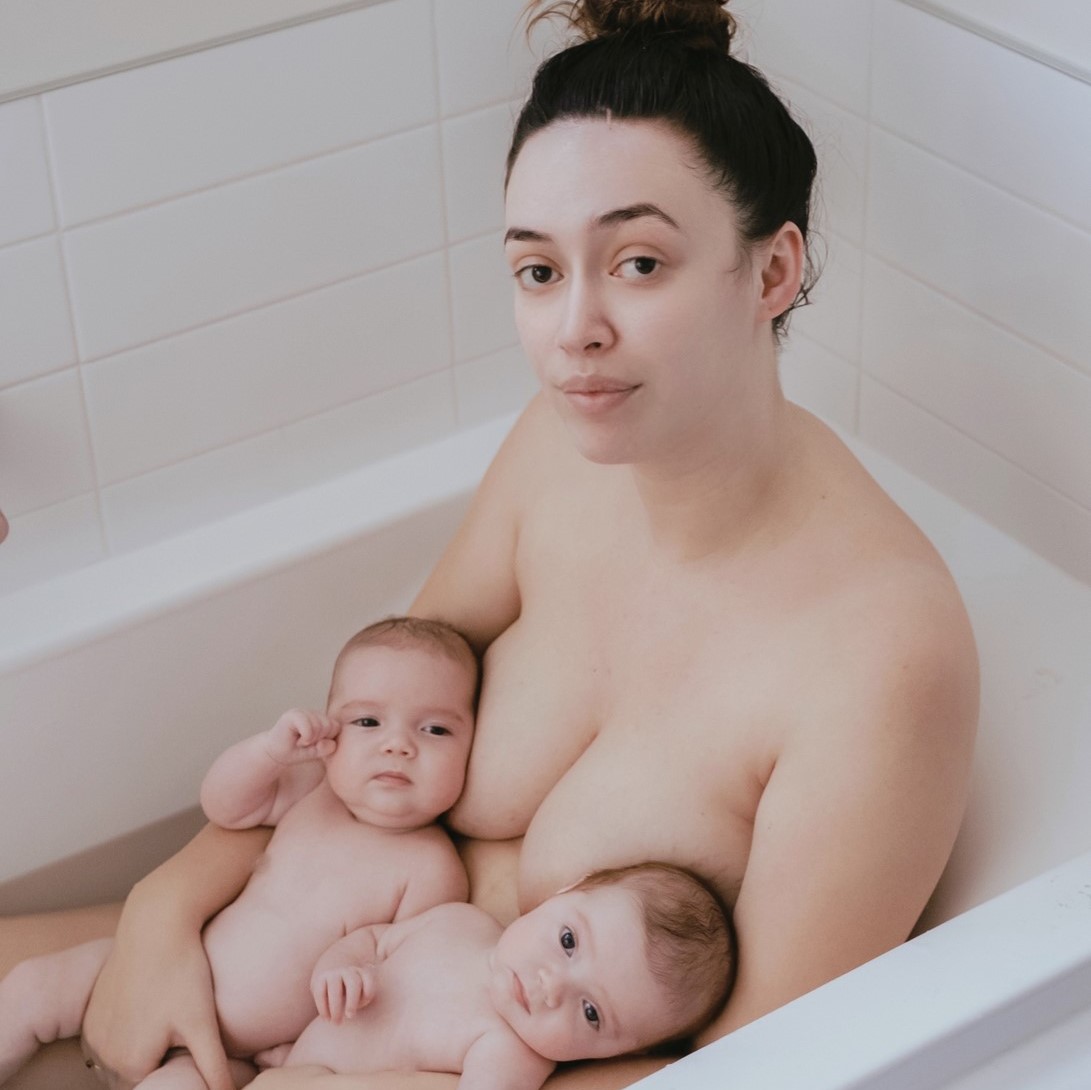Frequently Asked Questions of People Who Are Breastfeeding

PĒPI Hakihea
MĀMĀ Kayla Wilson
PHOTOGRAPHY Catherine Smith @catherinesmithphotography
Frequently asked questions and concerns of parents who are breastfeeding.
Q: What are the signs of a poor latch?
- Painful, uncomfortable or pinching feeling.
- Baby is nipple feeding, not breastfeeding (latch is shallow).
- Baby’s cheeks are dimpled.
- You can hear clicking noises.
- Baby’s nose is blocked or pressed up against the breast.
- If your nipple comes out of your baby’s mouth looking squashed or slanted like a lipstick, this is a sign that the latch isn’t deep enough.
Q: How often do babies feed?
Every pēpi is different and each baby’s desire to feed can change from one day to the next. Babies need at least eight feeds in 24 hours but most need eight to 12. Some may want to feed up to every two hours or more, including at night and, provided they’re gaining weight and having enough wet and dirty nappies, that’s normal too.
Q: How long will my baby take to feed?
A baby can take as little as 10 minutes and as long as an hour to feed. Generally, as they grow older they become more efficient. It’s important to let your newborn set the pace and tell you when he or she is done.
Q: How will I know when they’ve had enough?
When your baby has had enough, they will no longer be actively sucking and swallowing and may let the breast go. Once they have finished on one side, you can offer them the second side.
Q: How will I know if I have enough milk?
- Listen for rhythmic sucking and swallowing during feeds.
- Your baby should seem satisfied and settled after feeding.
- Pay attention to your baby’s output; after five days of age, your baby should be having at least six to eight wet nappies every 24 hours and their urine should be pale in colour. Their stools should be loose and mustard yellow in colour.
- Healthy weight gain is a good sign that your baby is getting what they need nutritionally.
Q: Does breast size matter?
Breasts come in all different shapes and sizes. While it’s tempting to compare to others, know that your breasts are unique and designed especially to feed your pēpi. The storage capacity for breast milk is not determined by breast size but by the number and size of glands and ducts there are in the breast. The amount of milk that breasts can store differs from person to person, and also between breasts for each individual.
Your storage capacity can have an effect on your breastfeeding management but, no matter how small or large your storage capacity is, you will be able to produce plenty of milk for your baby. For example, someone who has small storage capacities can still produce plenty of milk for their baby, however they will likely need to feed their baby more frequently to satisfy the baby’s nutrient needs and maintain a good milk supply.
There’s no way to know exactly how much your breasts can store, only your baby will know and this is why it is important for them to breastfeed on demand, whenever they are hungry and for as long as they like.
Q: Is it okay to breastfeed my baby to sleep?
Yes, it absolutely is okay if that works for you. Breastfeeding is not only important for your baby’s nutritional needs but provides comfort and soothing as well. If feeding your baby to sleep suits you and your whānau, that’s all that matters.



